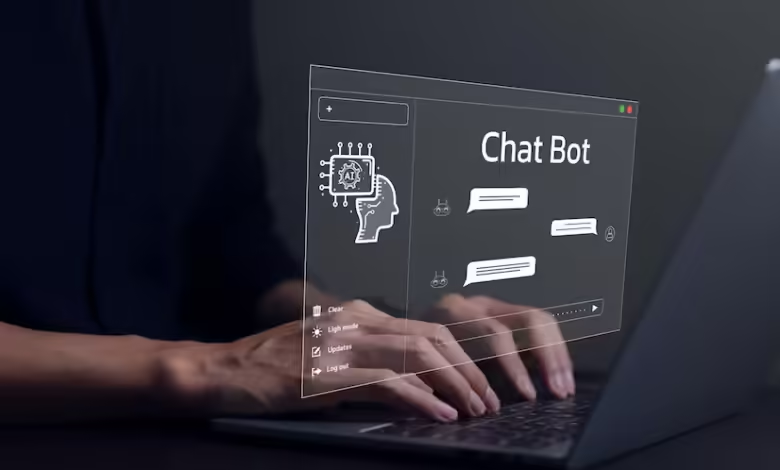Understanding chatgot: Your AI Conversation Partner

Introduction
In the ever-evolving landscape of artificial intelligence, chatgot stands out as a remarkable achievement. Developed by OpenAI, chatgot is designed to engage in natural language conversations, providing users with a unique blend of information, assistance, and companionship. This article explores the underlying technology of chatgot, its applications, its impact on communication, and the ethical considerations surrounding its use.
What is chatgot?
ChatGPT is an advanced language model based on the GPT (Generative Pre-trained Transformer) architecture. This model is trained on a diverse range of internet text, allowing it to generate human-like responses to a wide array of prompts. The “chat” in chatgot emphasizes its capability to engage in conversational exchanges, making it an ideal tool for various applications—from customer service to creative writing.
How Does chatgot Work?
At its core, chatgot utilizes deep learning techniques to process and generate text. Here’s a simplified breakdown of how it works:
- Pre-training: During the initial phase, the model is trained on a vast corpus of text data. This helps it learn grammar, facts, and some reasoning abilities. It develops a statistical understanding of how words and phrases relate to one another.
- Fine-tuning: After pre-training, the model undergoes fine-tuning using supervised learning. Here, human trainers provide examples of good and bad responses, helping the model improve its conversational skills.
- Reinforcement Learning: Finally, chatgot employs reinforcement learning from human feedback (RLHF) to further refine its capabilities. This involves rewarding the model for producing helpful and relevant responses.
Key Features of chatgot
- Conversational Abilities: chatgot can understand context and maintain a conversation over multiple turns, making interactions feel more natural.
- Versatility: Whether it’s answering questions, providing explanations, or engaging in casual chat, chatgot can adapt to various conversational styles and topics.
- Accessibility: Available on multiple platforms, chatgot is designed to be user-friendly, allowing anyone to engage with AI without needing technical expertise.
Applications of chatgot
chatgot versatility allows it to be used in various domains:
1. Customer Support
Many businesses are integrating chatgot into their customer service operations. The AI can handle routine inquiries, troubleshoot issues, and provide information 24/7, reducing the workload on human agents and improving response times.
2. Education
In educational settings, chatgot can serve as a virtual tutor, answering student questions and providing explanations on complex topics. It can offer personalized learning experiences, adapting to individual learning styles.
3. Content Creation
Writers and marketers use chatgot for brainstorming ideas, generating content drafts, and even editing text. Its ability to produce coherent and contextually relevant text can significantly enhance productivity in creative tasks.
4. Personal Assistant
As a virtual assistant, chatgot can help users manage tasks, set reminders, and provide information on various topics, making it a valuable tool for organization and productivity.
5. Entertainment
From storytelling to role-playing games, chatgot can engage users in creative scenarios, providing entertainment and enhancing user experience in gaming and interactive narratives.
The Impact of chatgot on Communication
The introduction of chatgot has transformed how we interact with technology and each other. Here are some key impacts:
1. Enhanced Accessibility
AI-driven tools like chatgot make information more accessible. Users can engage with technology through natural language, breaking down barriers associated with traditional interfaces.
2. Shift in Human-Computer Interaction
The conversational nature of chatgot represents a significant shift in how we interact with machines. Instead of relying on rigid commands, users can communicate more fluidly, resulting in a more intuitive experience.
3. Democratization of Information
By providing instant access to information and resources, chatgot democratizes knowledge. Users can seek answers and assistance without needing specialized training or expertise.
4. Social Interaction
For some, chatgot serves as a companion, alleviating feelings of loneliness and providing social interaction. This aspect of AI companionship can have both positive and negative implications for mental health.
Ethical Considerations
While chatgot offers numerous benefits, it also raises important ethical considerations that must be addressed:
1. Misinformation
Since chatgot is trained on a wide array of internet text, it may inadvertently generate misinformation or reflect biases present in its training data. Ensuring the accuracy and reliability of the information it provides is crucial.
2. Privacy Concerns
Users may share sensitive information during interactions with chatgot. Ensuring user privacy and data security is paramount to building trust in AI technologies.
3. Dependency on AI
As people become more reliant on AI for information and social interaction, there’s a risk of diminishing critical thinking skills and reducing face-to-face communication.
4. Job Displacement
The integration of chatgot in industries such as customer service may lead to job displacement for some workers. Addressing the economic implications of AI adoption is essential for a balanced approach to technological progress.
The Future of chatgot and AI Conversations
The future of chatgot and similar AI technologies holds great potential. Ongoing advancements in natural language processing and machine learning will likely enhance the model’s capabilities, making it even more effective in understanding and generating human-like responses.
1. Improved Contextual Understanding
Future iterations of chatgot may possess enhanced contextual awareness, allowing for deeper and more meaningful conversations. This could involve recognizing emotions, tone, and intent more accurately.
2. Personalization
As AI systems evolve, the ability to tailor interactions based on user preferences and behaviors will become more sophisticated. This personalization could lead to more engaging and relevant conversations.
3. Integration with Other Technologies
chatgot may increasingly be integrated with other technologies, such as virtual reality and augmented reality, creating immersive conversational experiences that blend the physical and digital worlds.
4. Ethical Frameworks
As the use of AI in communication grows, establishing ethical frameworks and guidelines will be essential to mitigate risks and ensure responsible development and deployment of these technologies.
Conclusion
chatgot represents a significant advancement in artificial intelligence and natural language processing. Its ability to engage in human-like conversations has numerous applications, from customer support to creative writing, making it a versatile tool in various fields. However, with great power comes great responsibility. Addressing the ethical considerations surrounding its use will be crucial as we move forward into an era where AI plays an increasingly prominent role in our daily lives.
As we explore the capabilities and implications of chatgot, it’s essential to remain informed, engaged, and proactive in shaping the future of AI conversation. With the right approach, we can harness the potential of chatgot and similar technologies to enhance communication, accessibility, and understanding in our ever-evolving world.




